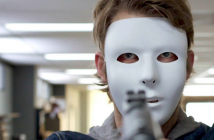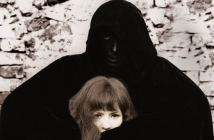
Editor’s Notes: The following review is part of our coverage for TIFF’s Dreaming in Technicolor. For more information on this TIFF film series visit http://tiff.net and follow TIFF on Twitter at @TIFF_NET.
As the 1950s rolled around, MGM dominated the Technicolor musical. With stars like Judy Garland, Frank Sinatra, Fred Astaire, and Gene Kelly on contract, and directors like Vincente Minnelli and Stanley Donen tying it all together, how could they fail? At the 24th Academy Awards, held one week before the premiere of Singin’ in the Rain in March 1952, An American in Paris won MGM its first Best Picture Oscar in a decade. It was a magical time.
Generally (and correctly) considered the best of MGM’s musicals, Singin’ in the Rain is the sort of film where every aspect of it conspires to be perfect.
Generally (and correctly) considered the best of MGM’s musicals, Singin’ in the Rain is the sort of film where every aspect of it conspires to be perfect. The songs, the dancing, the sets and costumes, the performers, and that script; there’s hardly a bum note amongst them. It is a breathlessly entertaining, timelessly charming film, that also doubles as a biting commentary on the Hollywood celebrity machine that remains as fascinating now as it did in ’52.

The film is actually a jukebox musical, in the style now familiar from Moulin Rouge! or Mamma Mia!, with top producer Arthur Freed wanting to recycle his back catalogue of songs from when he was a lowly lyricist in the ’20s and ’30s. Constructing a half-decent story around pre-selected songs is rarely possible, but the screenplay by On the Town duo Betty Comden and Adolph Green proved even more electrifying than the curated melodies and the accompanying dance numbers. Reuniting On the Town’s directors, the inimitable Stanley Donen and superstar Gene Kelly, Singin’ in the Rain was never going to be a failure. But it still boggles the mind that it all came together as perfectly as it did.
A reflection on Hollywood’s history, Singin’ in the Rain is itself a piece of history. It is the perfect entertainment, and one of the most exquisite works to ever be shot on film, Technicolor or otherwise.
The story is potent if untimely. The setting is 1927, and the golden age of silent cinema is unknowingly drawing to a close. Don Lockwood (Kelly) and Lina Lamont (Jean Hagen) are two of Hollywood’s biggest stars, whose tabloid romance is all spin to sell movie tickets. In reality Don hates Lina, a diva whose skin-crawlingly grating voice is actually the least of her problems. That is until the talkies take over Tinseltown, and the latest Lockwood and Lamont picture gets a rushed rewiring for sound; Lina’s voice, a mystery to the fans of her silent movies, could bring down the whole studio.
The conversion to sound was hard for a lot of performers, from Buster Keaton to Gloria Swanson, but it’s the now largely forgotten silent star Norma Talmadge who Lina is based upon. Singin’, however, cleverly makes Lina so vile a person that her fall from prestige is as entertaining as Don’s rise to fame. Throw in a real love interest for Don in the form of Debbie Reynold’s Kathy Selden, a character who would make a button insecure about its own cuteness, and you have all the drama you could need.
One of the amazing things about Singin’ in the Rain is that, because so few of its songs are tied directly to the storytelling, there’s only maybe 80 minutes of plot-based activity here. This is why the film feels so thoroughly bloated with gags and one-liners – because there’s actually a lot less dialogue than the average 100+ minute movie would have. And with that extra half hour filled with the likes of outstanding and hilarious performances of ‘Make ’Em Laugh’ and Moses Supposes’, the time flies by. It’s pure showmanship, of course, culminating in the marathon ‘Broadway Melody Ballet’, a fantasy sequence of unabashed celluloid ego akin to that which rang out An American in Paris, but far more joyous and colourful. This is where the film’s Technicolor assault is most ferocious, with dazzling sets and costumes; Gene Kelly’s canary yellow waistcoat is practically solar in the colour it gives off.
The cast is a dream. Hagen relishes playing the vapid starlet, while Reynolds brings an unmatchable earnest charm to Kathy. As Don’s best friend Cosmo Brown, the definitive comic relief, Donald O’Connor nearly steals the whole picture, firing out one-liners with relentless sophistication, while keeping step with Kelly in every one of their frantic duets. Kelly, of course, proves himself once more to be the quintessential musical leading man; charming, handsome, witty, with a gentle but soulful singing voice and a dancer’s body that sets him moving like a rocket-powered whirligig. His fluid gyrations never fail to drop jaws in awe, and when paired with the astonishing Cyd Charisse they bring out an exotic eroticism that has rarely been matched onscreen. Only Millard Mitchell, as studio boss R.F. Simpson, feels stale, although he seems very much a send-up of the stuffy Hollywood producer.
A reflection on Hollywood’s history, Singin’ in the Rain is itself a piece of history. It is the perfect entertainment, and one of the most exquisite works to ever be shot on film, Technicolor or otherwise. It can all be summed up in the titular song, borrowed from a 1929 variety show movie, during which Don tiptoes around and splashes in rainswept puddles, madly in love and hopeful that everything is going to work out after a movie preview goes sour. Kelly gently hums the opening “doo de-doot doo”s of the movie with a subtle confidence that suggests he is utterly aware that he is redefining what cinema can offer its audience. The whole movie is inherently show-offish, but it never has reason not to be proud. And that’s what affords it its unique dignity. Always dignity.
The pinnacle of the Technicolor musical and the finest example of Hollywood cinema as pure showmanship. The script is uproarious, the performances pitch perfect, and the song and dance numbers display some of the finest choreography and cinematography any studio picture has ever delivered.



